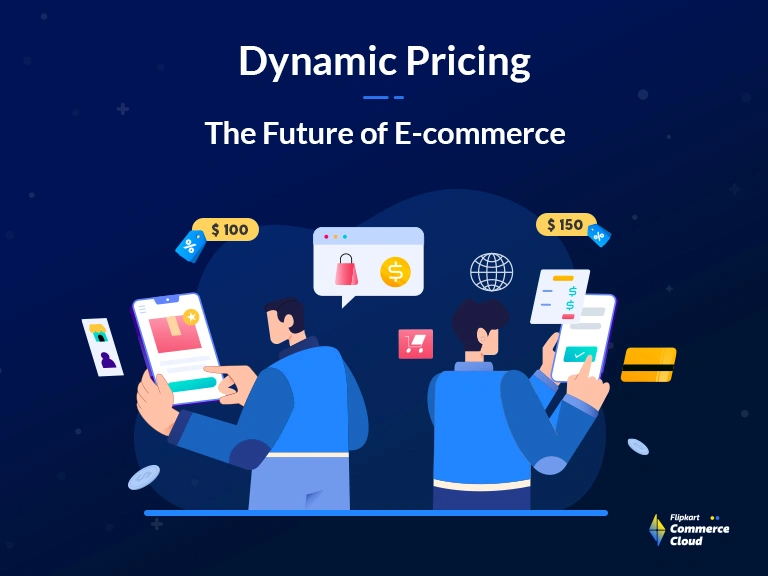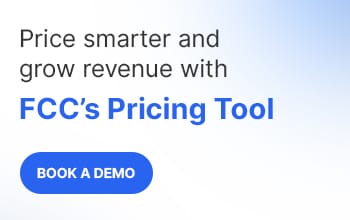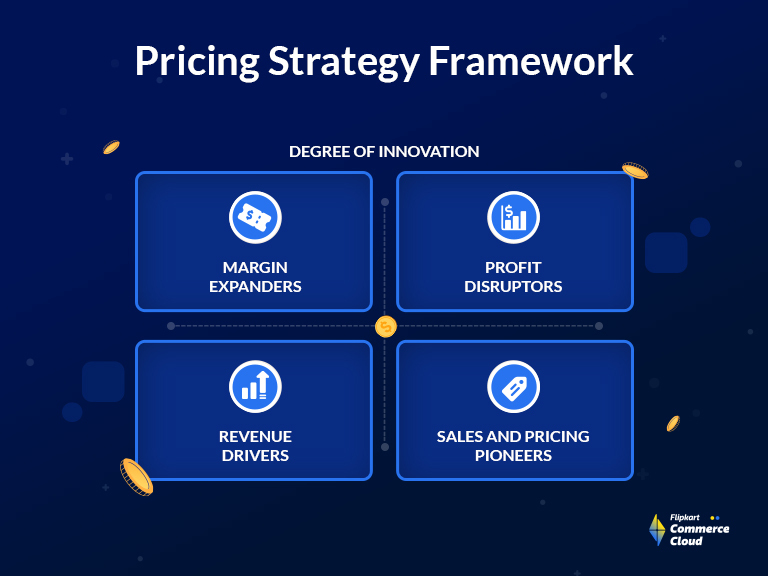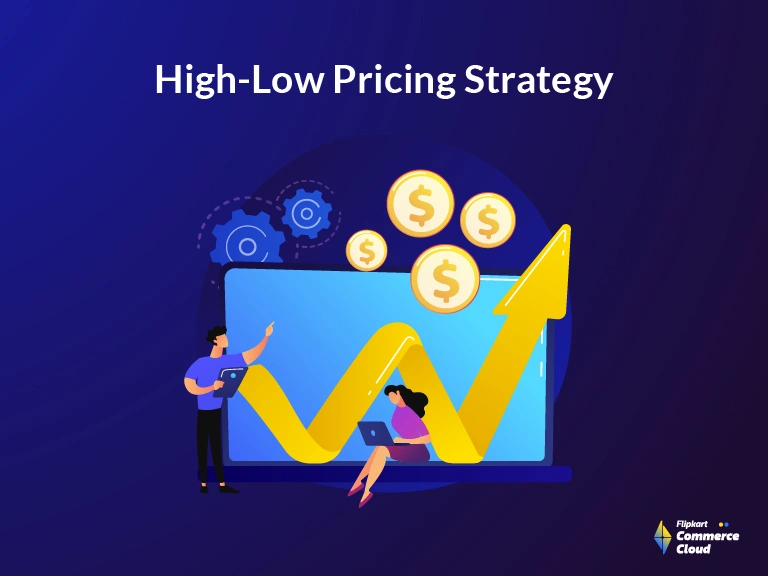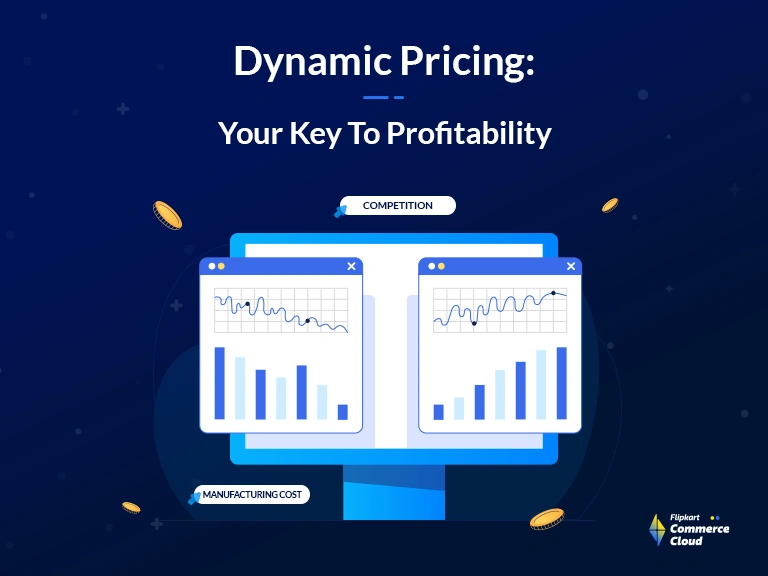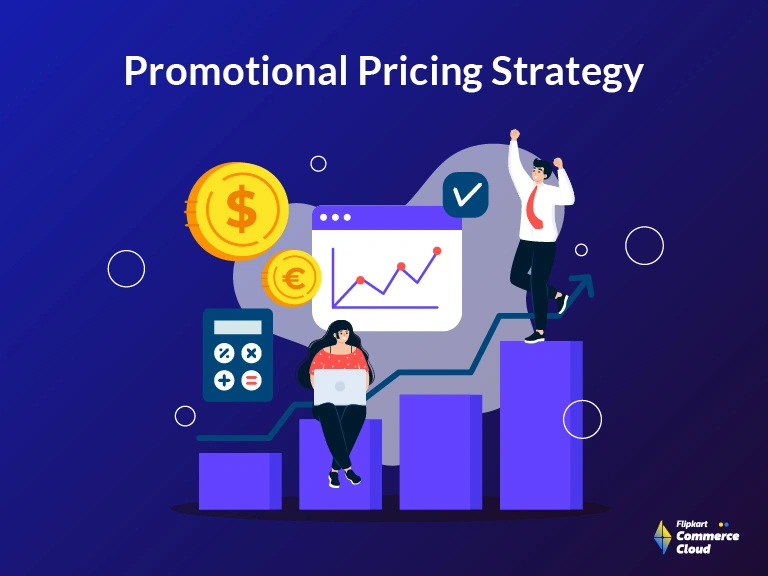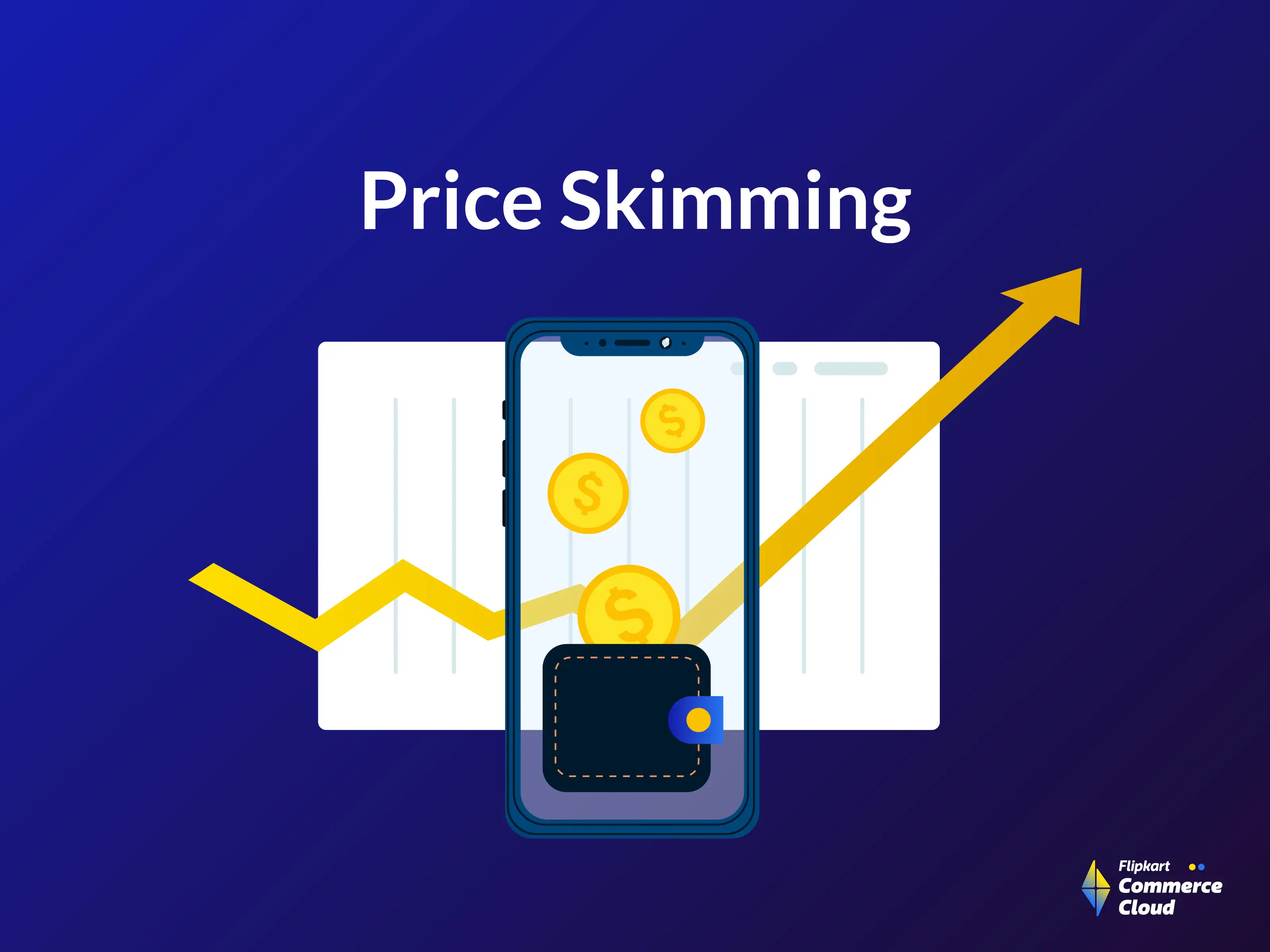Recent data from the U.S Census Bureau shows that online sales in the United States surged to approximately $277.6 billion in the second quarter of 2023, marking a 2.1% increase from the previous quarter. This growth is not isolated; Statista predicts that by 2025, E-commerce will account for a substantial 23% of all retail sales, up from 20% in 2021. Clearly, E-commerce is booming.
Yet, within this bustling digital marketplace, competition is fierce and unrelenting. With countless buyers and sellers vying for attention, the question arises: What sets successful E-commerce brands apart from the rest? The answer, more often than not, lies in their pricing strategy.
While brands have utilized multiple traditional pricing strategies throughout the decades, dynamic pricing emerges as a strategic linchpin in today’s scenario. Dynamic pricing is a potent methodology characterized by its ability to adjust prices in real-time based on market dynamics and a myriad of influencing factors. This strategy has garnered considerable attention for its potential to boost profitability and competitiveness among E-commerce businesses globally.
In this comprehensive article, we will dive deep into the world of dynamic pricing, looking at its relevance and profound impact on E-commerce enterprises.
Also Read: Ultimate Guide To Dynamic Pricing Strategy In 2025
Why is Dynamic Pricing Relevant for ECommerce Businesses?
E-Commerce is constantly evolving. Dynamic pricing emerges as a vital lever for businesses seeking to navigate and thrive amidst the complexities of the marketplace. Here’s why dynamic pricing is important for E-Commerce businesses:
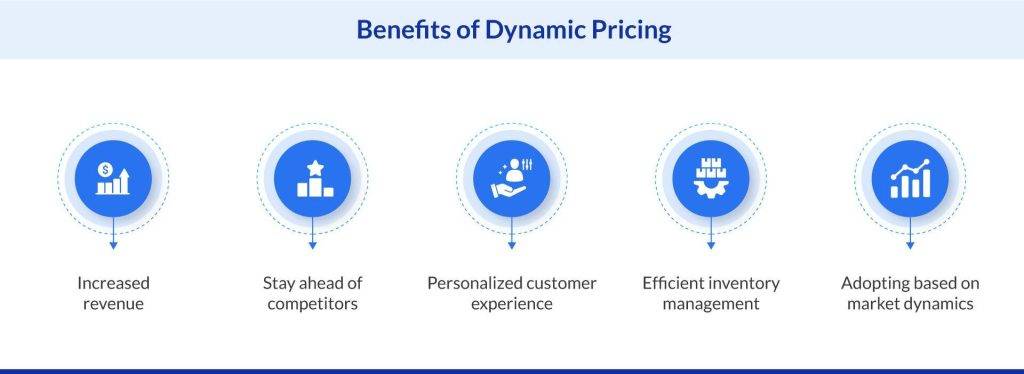
Maximizing Profitability
Dynamic pricing isn’t about randomly adjusting prices. It’s about harnessing the power of data and analytics to optimize profitability. By continuously monitoring market conditions, competitor pricing, and customer behavior, E-commerce businesses can make pricing decisions that maximize their revenue. This agility in pricing allows for capitalizing on peak demand periods, clearing out excess inventory during off-peak times, and maintaining healthy profit margins.
Staying Ahead of Competitors
In the fiercely competitive E-commerce arena, reacting swiftly to market changes is paramount. Dynamic pricing empowers businesses to do just that. By making real-time adjustments in response to competitor prices, pricing strategies, and market fluctuations, E-commerce companies can maintain their competitive edge. They can even proactively undercut competitors or strategically price above them, depending on their goals.
Personalized Customer Experience
Customers today expect personalization in their shopping experiences. Dynamic pricing enables E-commerce businesses to deliver precisely that. By analyzing customer data and behavior, companies can tailor prices to individual preferences. This not only enhances customer satisfaction but also drives repeat business and brand loyalty.
Efficient Inventory Management
Excess inventory can be a drain on resources and profitability. Dynamic pricing helps mitigate this challenge by aligning prices with demand. When a product isn’t moving as expected, the system can automatically lower its price to stimulate sales. Conversely, when an item is in high demand, the pricing can be adjusted upward to capitalize on the trend. This dynamic approach to inventory management minimizes waste and maximizes revenue.
Adapting to Market Dynamics
Market conditions are seldom static. They fluctuate due to various factors, such as seasonality, economic trends, and unforeseen events. E-commerce businesses leverage dynamic pricing to adapt swiftly to these changing dynamics. Whether it’s responding to a sudden surge in demand for a particular product or navigating through an economic downturn, different types of dynamic pricing ensure that brands can make data-driven pricing decisions that align with the prevailing market realities.
Imagine an E-commerce business specializing in consumer electronics. They employ dynamic pricing as a core strategy, and here’s how it proves its relevance:
The business stocks a popular smartphone model, and a new, upgraded version is about to be released. The existing inventory of the current model needs to be cleared to make room for the latest one.
Dynamic Pricing Action:
Market Analysis: The E-commerce team continuously monitors the market for this smartphone model. They identify a surge in demand for the current model as rumors of the new release circulate.
Real-time Price Adjustment: The dynamic pricing algorithm swiftly responds by reducing the price of the current model. This price reduction is not arbitrary; it’s calculated to be competitive while still ensuring profitability.
Results:
Increased Sales: The price drop sparks a surge in sales for the current smartphone model. Customers looking for a deal and those not wanting to wait for the new release make purchases.
Optimized Inventory: By clearing out the existing stock quickly, the E-commerce business avoids the cost of carrying excess inventory. This is crucial for electronics, where product lifecycles are short.
Profitability: Despite reducing prices, the business maintains profitability due to the high volume of sales generated during this strategic pricing move.
Remember, it’s not about haphazardly slashing prices but rather about using data-driven insights to respond effectively to market conditions, ultimately benefiting the bottom line of your E-commerce business.
How to Implement Dynamic Pricing in E-commerce
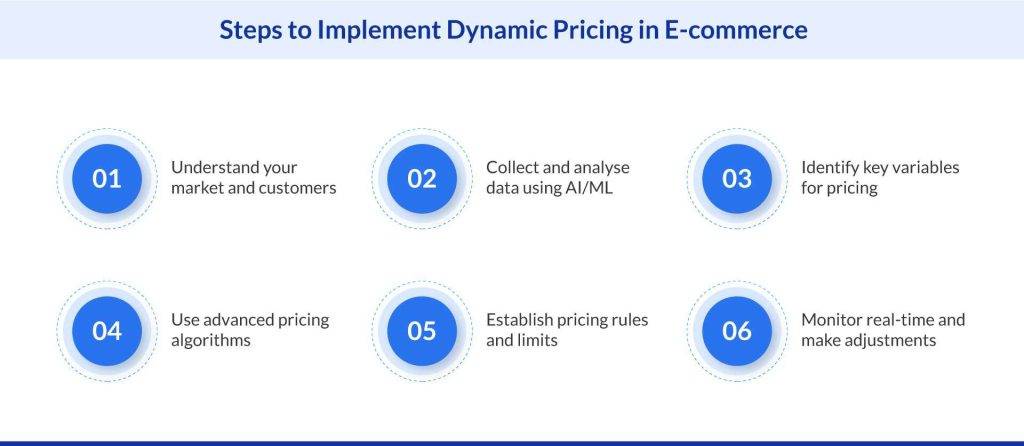
Now that we’ve seen why you should be implementing dynamic pricing for your E-commerce business, let us delve into the intricacies of how to effectively put this powerful strategy into action.
Understand Your Market and Customers
Before you embark on your dynamic pricing journey, it’s crucial to have a comprehensive understanding of your market and customers. The first step to implement dynamic pricing is to know your customers and their preferences, needs, and willingness to pay. Start by conducting thorough market research to identify your target audience and their preferences. Analyze historical data to uncover trends and patterns in consumer behavior. Dive into demographic and psychographic information to gain insights into what drives purchasing decisions.
Furthermore, segment your customer base based on various criteria such as location, age, income level, and buying frequency. Understanding these segments will allow you to tailor your dynamic pricing strategies to specific customer groups, offering them more personalized pricing that resonates with their needs and preferences.
Data Collection and Processing with ML & AI
Effective dynamic pricing relies heavily on data. Begin by collecting a wide range of data, including historical sales data, competitor pricing, website traffic patterns, and any other relevant information. Modern E-commerce businesses can harness the power of big data and advanced analytics tools to process this wealth of information.
Machine learning and artificial intelligence can play a pivotal role in this step, helping you uncover hidden patterns and insights that traditional analysis might miss. These technologies enable you to identify correlations between pricing changes and customer behavior, allowing for more accurate pricing adjustments.
Identify Key Variables for Pricing
With your data in hand, it’s time to identify the key variables that will influence your dynamic pricing strategy. Consider variables such as demand fluctuations, competitor pricing changes, time of day, seasonality, and customer segments. These variables will serve as the building blocks for your pricing algorithms.
Moreover, you’ll want to assign weights to these variables based on their impact on pricing. Some variables may have a more significant influence on your pricing decisions than others. For instance, during a flash sale, demand may be the primary driver of pricing adjustments, while regular daily fluctuations may be less impactful.
Algorithm Development
The heart of dynamic pricing lies in the development of advanced pricing algorithms. These algorithms should be designed to analyze the data you’ve collected and make real-time pricing decisions based on the identified variables.
Your algorithm’s complexity will depend on the intricacy of your pricing strategy. For instance, a simple algorithm may adjust prices based solely on demand, while a more advanced one could consider multiple variables simultaneously, such as demand, competitor pricing, and historical sales data.
It’s essential to strike a balance between complexity and efficiency. A highly complex algorithm may be accurate but computationally intensive, while a simpler one may be less accurate but more resource-efficient.
Set Pricing Rules and Limits
Establishing clear pricing rules and limits is crucial to ensure that your dynamic pricing strategy aligns with your business objectives and doesn’t veer into undesirable territory. These rules act as guardrails to prevent extreme pricing fluctuations that could alienate customers or harm your brand reputation.
For example, you can set minimum and maximum price thresholds for each product or service to ensure that your pricing remains within acceptable ranges. Additionally, you may implement rules that prevent prices from changing too frequently or by a certain percentage within a specific time frame. These rules provide stability and predictability to both you and your customers.
Real-time Monitoring and Adjustments
Once your dynamic pricing strategy is implemented, the journey is far from over. Continuous real-time monitoring is essential to track market changes, competitor pricing movements, and shifts in the variables you’ve identified.
Your monitoring system should provide you with immediate insights into whether your pricing adjustments are achieving the desired results. If not, you must be prepared to make swift adjustments to fine-tune your algorithms and pricing rules. Real-time monitoring ensures that your pricing remains agile and responsive to evolving market dynamics.
A/B Testing and Optimization
To refine and optimize your dynamic pricing strategy, you should regularly conduct A/B testing. A/B testing involves comparing different pricing approaches to determine which ones resonate best with your target audience and yield the most favorable outcomes.
For instance, you can test different pricing algorithms or pricing rules on a subset of your products or a specific customer segment. Analyze the results of these tests to identify which strategies are most effective in terms of driving sales and profitability. Use these insights to continually refine and optimize your pricing algorithms and rules.
Compliance and Ethics
In the pursuit of dynamic pricing optimization, it’s imperative to remain ethically and legally compliant. Your pricing strategy should adhere to all relevant regulations and laws, avoiding any discriminatory or unethical pricing practices.
For instance, be cautious of price discrimination, where customers are charged different prices based on factors such as their location or demographic characteristics. Transparency in pricing adjustments is essential to maintain trust with your customers and avoid legal repercussions.
Example of E-Commerce Dynamic Pricing
Dynamic pricing is a common strategy employed by E-commerce giants like Walmart and eBay to optimize prices and maximize revenue. Here’s a quick look at how Walmart utilizes dynamic pricing for its E-Commerce business:
Walmart’s dynamic pricing strategy is a testament to their data-driven precision. They employ advanced data analytics to amass a diverse array of information, spanning historical sales data, inventory levels, competitor pricing, customer demographics, and even external factors like weather forecasts. This comprehensive data forms the bedrock of their dynamic pricing approach.
Walmart excels at demand forecasting, utilizing predictive analytics to anticipate shifts in consumer demand influenced by factors such as seasonality, holidays, and emerging market trends. This foresight enables them to proactively optimize prices ahead of the competition, setting a dynamic pricing strategy in motion.
Strategically utilizing geo-pricing further bolsters Walmart’s competitive edge, adjusting prices based on the customer’s location. This may involve offering slightly lower prices in regions with lower median incomes to maintain competitiveness and appeal to a broader customer base.
Complementing these strategies are dynamic discounts and intelligent bundling initiatives pivotal to Walmart, encouraging repeat business and larger transactions. Furthermore, during major sales events like Black Friday or back-to-school promotions, Walmart adeptly employs real-time dynamic pricing, capitalizing on surges in demand by attracting shoppers with competitive prices and exclusive deals.
Walmart’s dynamic pricing strategy is constantly evolving. The company is continually investing in new technologies and data sources to improve its ability to predict demand and set optimal prices.
What factors should be considered when setting prices dynamically?
When setting prices dynamically in ecommerce, factors such as demand, competition, customer behavior, seasonality, and inventory levels should be considered. By analyzing these variables and using data-driven insights, businesses can optimize their pricing strategies to maximize revenue and profitability.
Partnering with FCC for Dynamic Pricing Excellence
Imagine a tool that leverages advanced AI and machine learning algorithms to meticulously analyze market data, providing precise insights into demand patterns. This isn’t just about data; it’s about informed, real-time decision-making.
Our platform empowers you to tap into invaluable demand patterns, ensuring your pricing decisions are finely tuned to market dynamics. And it goes further. With real-time price updates, your product prices not only stay accurate but also remain fiercely competitive.
What sets FCC apart is our dedication to customization. Our platform equips you with tools to craft pricing rules that suit your unique requirements, offering exceptional control and flexibility in shaping your pricing strategy.
But our offering extends beyond customization. Our user-friendly dashboards and analytics reports are intuitively designed for seamless use, accommodating both a handful of products and an extensive catalog. You can scale our platform to your needs, continuously evaluating pricing performance and making strategic refinements effortlessly.
With the FCC Dynamic Pricing Engine, you’re not just making pricing decisions; you’re revolutionizing your approach to E-commerce. So, why wait?
